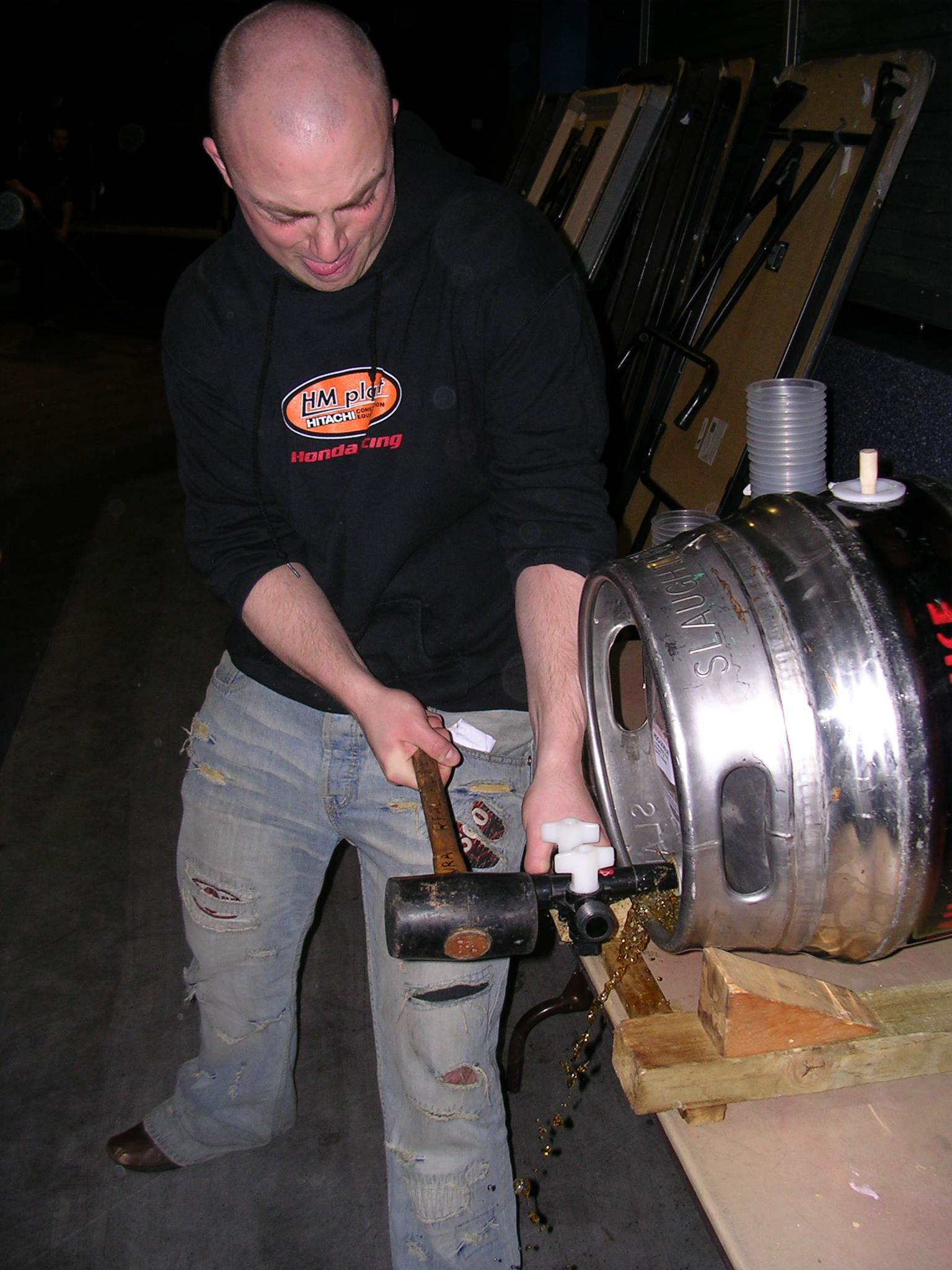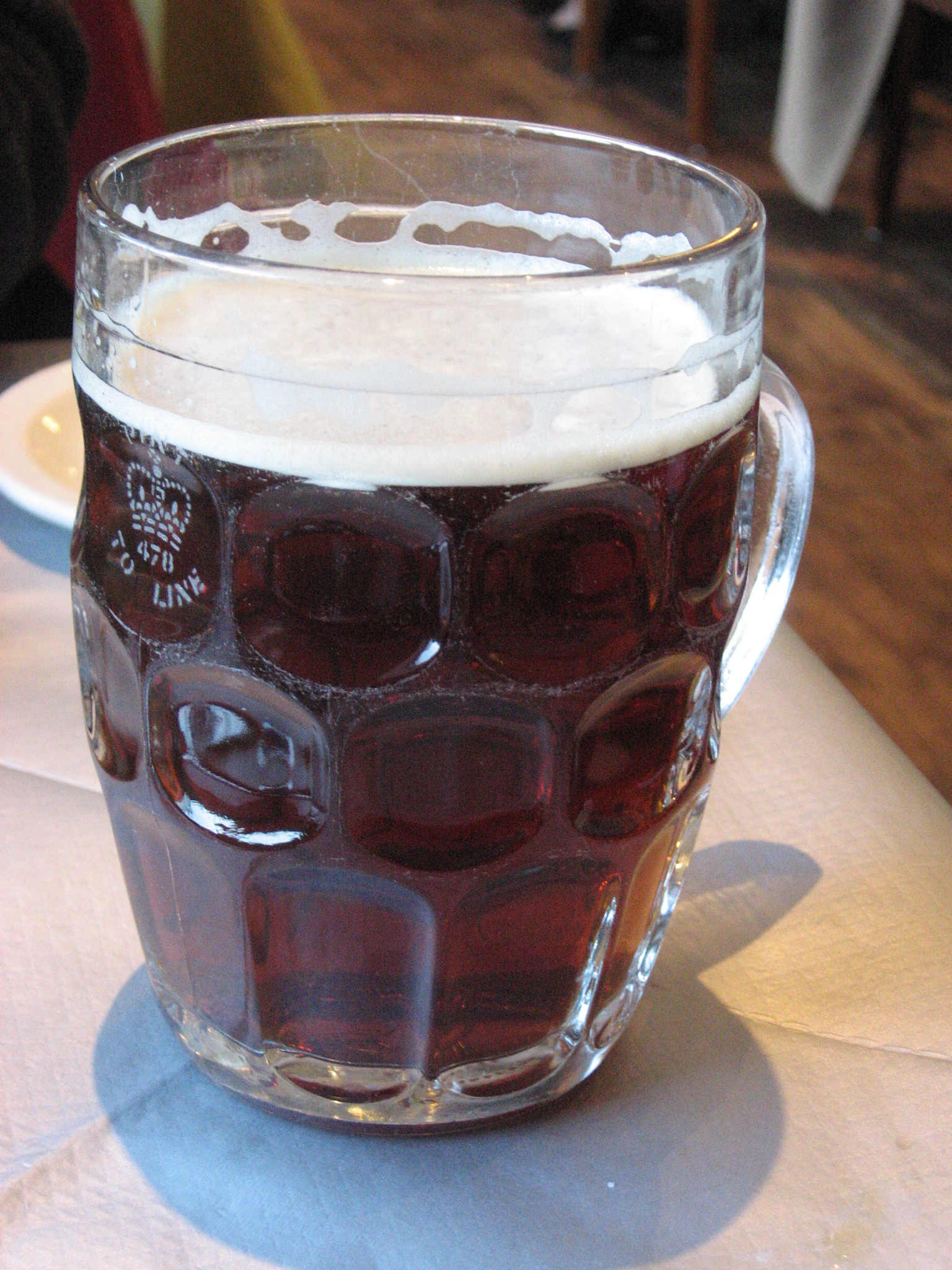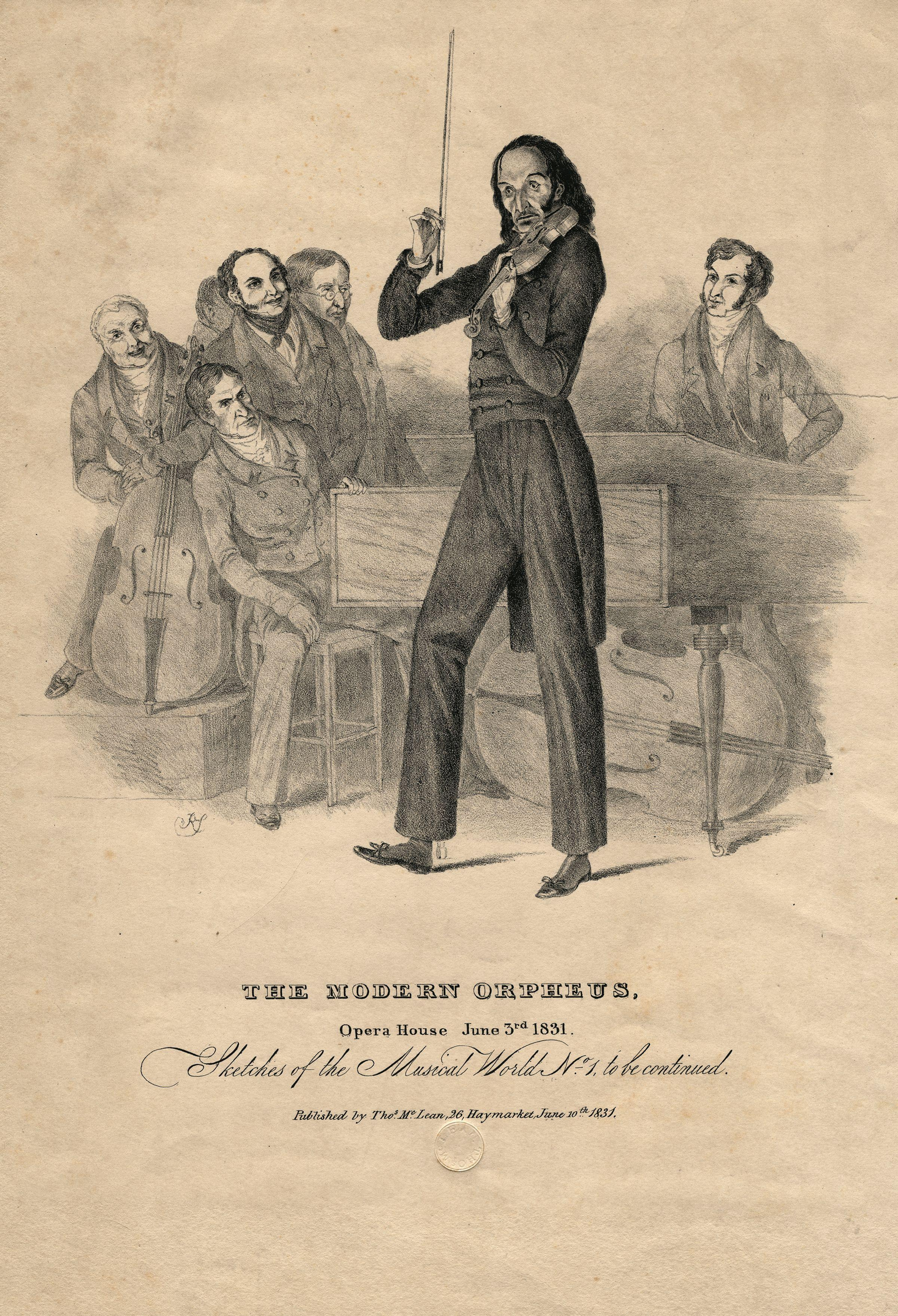|
Keystone (cask)
A keystone is a small wooden or plastic fitting used in ale casks. For some years wooden casks have been effectively obsolete, with the majority now being aluminium or stainless steel, and a few sturdy plastic ones beginning to appear. Nevertheless, the standard tap is still designed to be hammered into yielding material, punching a hole as it goes. All modern casks, even the few wooden ones still in use, use a replaceable keystone to accept the tap. Background The bung-hole of the cask is on one of the circular faces, near the rim. When the cask is in service, it is laid on its side with the bunghole at the lowest point on the circumference. The keystone is a small thick wooden or plastic disk inserted into the bunghole which completely seals the cask until it is needed. The center of the keystone is deliberately weakened, this area may be marked or unmarked and is called the tut. In the plastic variety it is much thinner than the surrounding material; if made of wood it is partia ... [...More Info...] [...Related Items...] OR: [Wikipedia] [Google] [Baidu] |
Wood
Wood is a porous and fibrous structural tissue found in the stems and roots of trees and other woody plants. It is an organic materiala natural composite of cellulose fibers that are strong in tension and embedded in a matrix of lignin that resists compression. Wood is sometimes defined as only the secondary xylem in the stems of trees, or it is defined more broadly to include the same type of tissue elsewhere such as in the roots of trees or shrubs. In a living tree it performs a support function, enabling woody plants to grow large or to stand up by themselves. It also conveys water and nutrients between the leaves, other growing tissues, and the roots. Wood may also refer to other plant materials with comparable properties, and to material engineered from wood, or woodchips or fiber. Wood has been used for thousands of years for fuel, as a construction material, for making tools and weapons, furniture and paper. More recently it emerged as a feedstock for the productio ... [...More Info...] [...Related Items...] OR: [Wikipedia] [Google] [Baidu] |
Plastic
Plastics are a wide range of synthetic or semi-synthetic materials that use polymers as a main ingredient. Their plasticity makes it possible for plastics to be moulded, extruded or pressed into solid objects of various shapes. This adaptability, plus a wide range of other properties, such as being lightweight, durable, flexible, and inexpensive to produce, has led to its widespread use. Plastics typically are made through human industrial systems. Most modern plastics are derived from fossil fuel-based chemicals like natural gas or petroleum; however, recent industrial methods use variants made from renewable materials, such as corn or cotton derivatives. 9.2 billion tonnes of plastic are estimated to have been made between 1950 and 2017. More than half this plastic has been produced since 2004. In 2020, 400 million tonnes of plastic were produced. If global trends on plastic demand continue, it is estimated that by 2050 annual global plastic production will reach over 1, ... [...More Info...] [...Related Items...] OR: [Wikipedia] [Google] [Baidu] |
Cask Ale
Real ale is the name coined by the Campaign for Real Ale (CAMRA) for beer that is "brewed from traditional ingredients, matured by secondary fermentation in the container from which it is dispensed, and served without the use of extraneous carbon dioxide". Cask and bottle-conditioned beers Cask and bottle-conditioned beers are referred to as real ale by CAMRA, as both fit its description of beers served from a container in which they have undergone secondary fermentation. Filtered beer The fundamental distinction between real and other ales is that the former are not filtered and the yeast is still present and living in the container from which the real ale is served, although it will have settled to the bottom and is usually not poured into the glass. The natural carbon dioxide is lost during filtration so filtered beer has to be artificially re-carbonated. This can make the beer very 'gassy'. Because the yeast is still present and alive in real ale, a slow process of secon ... [...More Info...] [...Related Items...] OR: [Wikipedia] [Google] [Baidu] |
Barrel (storage)
A barrel or cask is a hollow cylindrical container with a bulging center, longer than it is wide. They are traditionally made of wooden staves and bound by wooden or metal hoops. The word vat is often used for large containers for liquids, usually alcoholic beverages; a small barrel or cask is known as a keg. Modern wooden barrels for wine-making are made of French common oak (''Quercus robur''), white oak (''Quercus petraea''), American white oak (''Quercus alba''), more exotic is Mizunara Oak all typically have standard sizes: Recently Oregon Oak (Quercus Garryana) has been used. *"Bordeaux type" , *"Burgundy type" and *"Cognac type" . Modern barrels and casks can also be made of aluminum, stainless steel, and different types of plastic, such as HDPE. Someone who makes barrels is called a "barrel maker" or cooper (coopers also make buckets, vats, tubs, butter churns, hogsheads, firkins, kegs, kilderkins, tierces, rundlets, puncheons, pipes, tuns, butts, pins, tr ... [...More Info...] [...Related Items...] OR: [Wikipedia] [Google] [Baidu] |
Aluminium
Aluminium (aluminum in American and Canadian English) is a chemical element with the symbol Al and atomic number 13. Aluminium has a density lower than those of other common metals, at approximately one third that of steel. It has a great affinity towards oxygen, and forms a protective layer of oxide on the surface when exposed to air. Aluminium visually resembles silver, both in its color and in its great ability to reflect light. It is soft, non-magnetic and ductile. It has one stable isotope, 27Al; this isotope is very common, making aluminium the twelfth most common element in the Universe. The radioactivity of 26Al is used in radiodating. Chemically, aluminium is a post-transition metal in the boron group; as is common for the group, aluminium forms compounds primarily in the +3 oxidation state. The aluminium cation Al3+ is small and highly charged; as such, it is polarizing, and bonds aluminium forms tend towards covalency. The strong affinity tow ... [...More Info...] [...Related Items...] OR: [Wikipedia] [Google] [Baidu] |
Stainless Steel
Stainless steel is an alloy of iron that is resistant to rusting and corrosion. It contains at least 11% chromium and may contain elements such as carbon, other nonmetals and metals to obtain other desired properties. Stainless steel's corrosion resistance, resistance to corrosion results from the chromium, which forms a Passivation (chemistry), passive film that can protect the material and self-healing material, self-heal in the presence of oxygen. The alloy's properties, such as luster and resistance to corrosion, are useful in many applications. Stainless steel can be rolled into Sheet metal, sheets, plates, bars, wire, and tubing. These can be used in cookware, cutlery, surgical instruments, major appliances, vehicles, construction material in large buildings, industrial equipment (e.g., in paper mills, chemical plants, water treatment), and storage tanks and tankers for chemicals and food products. The biological cleanability of stainless steel is superior to both alumi ... [...More Info...] [...Related Items...] OR: [Wikipedia] [Google] [Baidu] |
Tap (valve)
A tap (also spigot or faucet: see usage variations) is a valve controlling the release of a liquid or gas. Nomenclature United Kingdom * Tap is used in the United Kingdom and most of the Commonwealth for any everyday type of valve, particularly the fittings that control water supply to bathtubs and sinks. United States * Faucet is the most common term in the US, similar in use to "tap" in British English, e.g. "water faucet" (although the term "tap" is also used in the US). * Spigot is used by professionals in the trade (such as plumbers), and typically refers to an outdoor fixture. * Silcock (and sillcock), same as "spigot", referring to a "cock" (as in stopcock and petcock) that penetrates a foundation sill. * Bib (bibcock, and hose bib or hosebibb), usually a freeze-resistant version of a "spigot". * Wall hydrant, same as "hosebibb". * Tap generally refers to a keg or barrel tap, though also commonly refers to a faucet that supplies either hot or cold water and not ... [...More Info...] [...Related Items...] OR: [Wikipedia] [Google] [Baidu] |
Mallet
A mallet is a tool used for imparting force on another object, often made of rubber or sometimes wood, that is smaller than a maul or beetle, and usually has a relatively large head. The term is descriptive of the overall size and proportions of the tool, and not the materials it may be made of, though most mallets have striking faces that are softer than steel. Mallets are used in various industries, such as upholstery work, and a variety of other general purposes. It is a tool of preference for wood workers using chisels with plastic, metal, or wooden handles, as they give a softened strike with a positive drive. * Wooden mallets are usually used in carpentry to knock wooden pieces together, or to drive dowels ,chisels and to apply pressure on joints. A wooden mallet will not deform the striking end of a metal tool, as most metal hammers would. It is also used to reduce the force driving the cutting edge of a chisel, giving better control. Hardwood mallets are also used ... [...More Info...] [...Related Items...] OR: [Wikipedia] [Google] [Baidu] |
Shive
{{Refimprove, date=November 2009 A shive is a wooden or plastic fitting used in ale casks. It is found on the curved side of the cask, arranged so that when the cask is on its side and the keystone is at the lowest part of the rim, the shive will be the highest point of the cask. The hole in that part of the cask is used for two purposes. Firstly, it is used for cleaning out and then refilling the cask, which requires a large hole. Once the cask arrives at its destination, the hole is used to control the amount of carbon dioxide present in the container, which requires a small hole. The shive is effectively an adaptor that reconciles these conflicting requirements. It is a wooden disk, larger than a keystone, that fits in the hole in the cask and has a smaller hole in its centre. For washing and filling, the old shive is removed using a chisel or a special tool, revealing a hole around 3 inches (7.5 cm) across. Once the cask has been filled and fined, a new shive is hamme ... [...More Info...] [...Related Items...] OR: [Wikipedia] [Google] [Baidu] |
Spile
A spile is a small wooden or metal peg used to control the flow of air into, and carbon dioxide out of, a cask of ale. Spiles can also be used to broach water from trees. Ale use Cask ale is dispensed without the addition of externally supplied gas. That it is served "flat" with no bubbles at all is, however, a misconception. Properly conditioned cask ale will have enough dissolved carbon dioxide to produce bubbles of carbon dioxide. This has been generated by the natural action of the yeast living in the beer while it is stored and transported. In fact, the yeast can produce more carbon dioxide than is required, and it is for this reason that the cask is vented through the hole in the shive. When it is first delivered to the place where beer will be poured from it or where it will be connected to the beer engine, the cask is sealed. It has a keystone (where the tap will be driven in) and a shive (through which it was filled). Once it has been laid down in the location at which t ... [...More Info...] [...Related Items...] OR: [Wikipedia] [Google] [Baidu] |
Tapping Ale Cask
Tapping is a playing technique that can be used on any stringed instrument, but which is most commonly used on guitar. The technique involves a string being fretted and set into vibration as part of a single motion. This is in contrast to standard techniques that involve fretting with one hand and picking with the other. Tapping is the primary technique intended for instruments such as the Chapman Stick. Description Tapping is an extended technique, executed by using either hand to 'tap' the strings against the fingerboard, thus producing legato notes. Tapping generally incorporates pull-offs or hammer-ons. For example, a right-handed guitarist might press down abruptly ("hammer") onto fret twelve with the index finger of the right hand and, in the motion of removing that finger, pluck ("pull") the same string already fretted at the eighth fret by the little finger of their left hand. This finger would be removed in the same way, pulling off to the fifth fret. Thus the three n ... [...More Info...] [...Related Items...] OR: [Wikipedia] [Google] [Baidu] |








